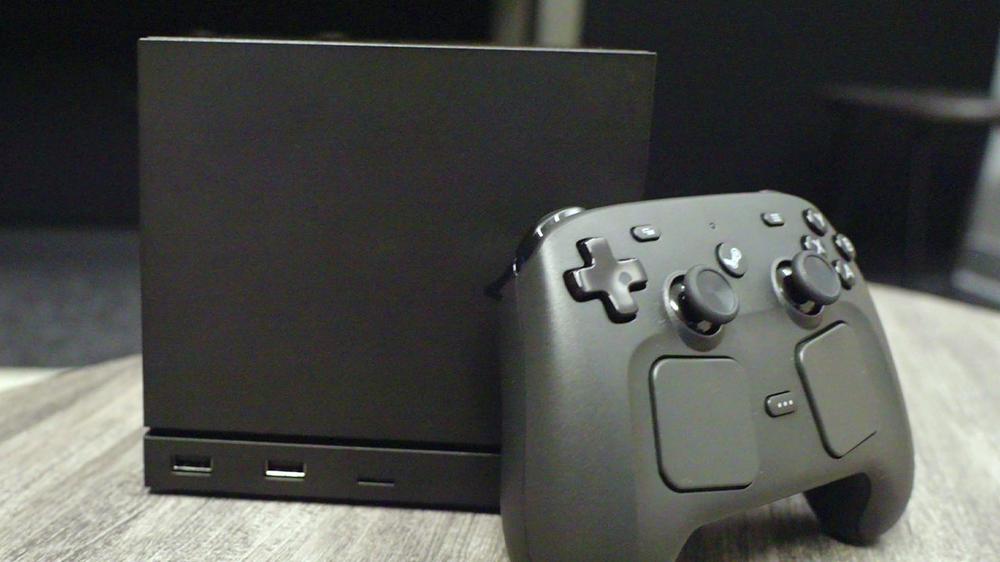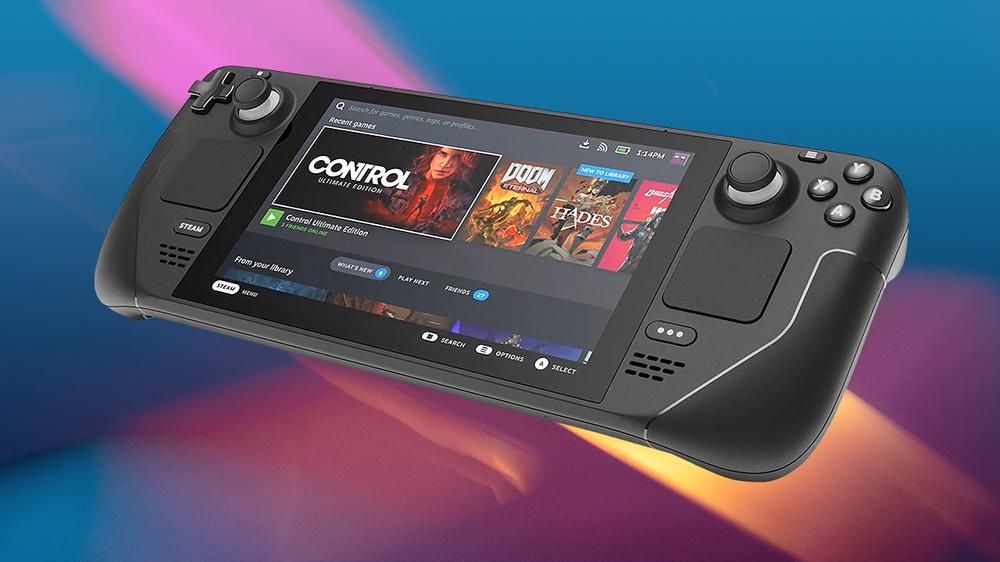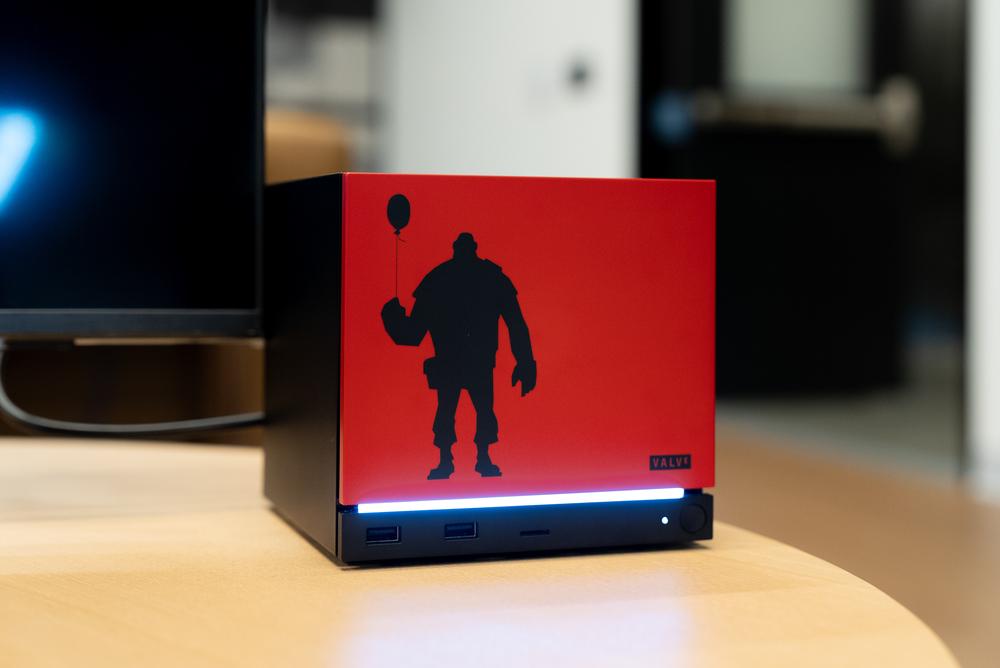After more than a decade, Valve is launching a new Steam Machine. While this little gaming PC is exciting on its own, it's also the next step in Valve’s play to become the face of PC gaming – at least more than it already is. Because alongside the Steam Machine, Valve is also launching a new controller and the Steam Frame, a VR headset that itself runs on SteamOS. Combined with the Steam Deck, Valve now has the makings of its own gaming tech ecosystem.
But this didn’t happen overnight. This is an ecosystem Valve has been quietly working on for more than a decade. And now that it’s starting to look like the next generation of ‘consoles’ is going to look more like gaming PCs than ever, it’s the perfect time for Steam to assert itself as the face of PC gaming.
What's in an Ecosystem?
When I talk about hardware ecosystems, the first thing that comes to mind is Apple. Over the last couple of decades, the Cupertino company has created a range of devices that all work in concert, syncing together your settings and preferences. It’s why, for the most part, when you get a new iPhone these days, setting up a new device is as simple as holding it up over your old iPhone, letting software move everything over. This works with pretty much all of Apple’s devices, too. Whether it’s an Apple Watch, Apple TV or even a MacBook, everything is just kind of easier if you have other devices from Apple.
On the surface, these different devices are all distinct from one another. But because Apple makes both the hardware and the software, the company can make it extremely tempting to only buy Apple products – it just makes certain things easier. Apple’s definitely not alone in doing this – even staying in the realm of phones, Samsung is very similar in its approach, too.
There’s a problem with this, though. Apple’s ecosystem is often referred to as a ‘walled garden’ in the way it makes people feel trapped after they’ve already invested in a couple of Apple devices. But it’s not the only way to do it.
Microsoft has also tried to create a similar ecosystem several times, starting with Windows Phone. I was one of the twelve people who owned one of these things, and it was genuinely useful to be able to carry my Windows settings over to my phone. But even after Microsoft’s mobile operating system faded into obscurity, Windows started to become a lot better at being a multi-device ecosystem in and of itself – even if it was limited to PCs.
If you have multiple PCs running off of Windows, it’s remarkably easy to set it up so that everything is just shared between them. Game saves, documents, and even settings are easy to set up so that they sync between your devices. Recently, the company has also tried to work Xbox into this ecosystem-centric approach. That’s why Microsoft claims everything is an Xbox – because through programs like Play Anywhere and Game Pass, everything potentially is. There’s just one problem, though: user experience.
Because Windows has been designed around mouse and keyboard for decades, retooling it to be cross-compatible with a UI that’s primarily used with a controller is going to take a lot of work. Microsoft has made some decent first steps in making Windows usable with a controller – just look at the Xbox Ally X – but Valve has a leg up with SteamOS.
SteamOS Is the Secret Weapon
Between the Steam Machine, the Steam Frame and the Steam Deck, Valve is clearly moving to make a SteamOS ecosystem of its own. SteamOS itself blew up in popularity with the Steam Deck in 2022, but it’s been around much longer than that.
Valve’s linux-based SteamOS launched in 2013, followed by the original Steam Machines in 2015. But while the skeleton of the operating system was similar, it relied on games that already had built-in Linux support. There certainly were games that would run on SteamOS, but not enough to sell people on abandoning Windows – especially when it was paired with expensive hardware.
This led to third-party Steam Machines being rebranded as Windows 8-based mini PCs, and it seemed like Valve’s PC-making days were in the past. But in 2018 Valve funded Proton, a compatibility layer that allowed SteamOS – along with other Linux distros – to run Windows games. While it was rough at first, only supporting a few games, according to a post on GamingOnLinux, it’s grown considerably in the seven years since its initial release.
Proton is ultimately what led to the Steam Deck’s success. Through this modified version of Wine, Valve’s little handheld can run pretty much any game in my library – albeit excluding any games that rely on anti-cheat (not that I play those anyway). The software is only getting better too. With the Steam Frame that Valve announced today, the company was able to get Proton running on the Qualcomm Snapdragon 8 Gen 3, which not only allows Windows games to run on Linux, but also allows games built for traditional PC processors like the x86 architecture to run on ARM. That’s something Apple has been struggling with – just look at the limited amount of PC games that are running on macOS, even with the Rosetta translation layer.
Thanks to Proton, Valve can now relaunch the Steam Machine while completely avoiding the compatibility issues that killed it in the past. It’s also joining a growing crowd of devices that are running SteamOS. Since people are already familiar with the operating system, it’ll be that much easier for them to ease into Valve’s nascent ecosystem. What’s more, SteamOS and Proton are largely open-source, so you don’t even have to tie yourself down to Valve’s hardware to get in on the action.
Un-Walled Garden
For the longest time, if you wanted to play PC games, you were almost forced into Windows, and it’s not hard to see why. Microsoft’s operating system has always had good hardware compatibility, which meant a wide range of machines and a huge built-in install base. But as Windows 11 gets more bloated with features like Copilot, an alternative has been desperately needed. The Steam Deck showed that it was possible to play most games without Windows, and the Steam Machine is going to go even further with its more powerful hardware. But there’s still room to grow.
Thankfully, due to the open-source nature of Linux – which SteamOS is built on – anyone can install it or modify it to their own needs. The actual Steam launcher is proprietary, of course, but you can add or remove features to SteamOS if you have the technical know-how, or at least know how to follow instructions on a GitHub page.
Right now, you can theoretically install SteamOS on any computer, even if it’s not technically supported by Valve. You just have to go to the SteamOS Recovery page, download the image to a flash drive and follow the instructions to install it. At the time of writing, only the Steam Deck and the Legion Go S are guaranteed by Valve to work, but as long as you have AMD hardware, you should be good to go. And even if you can’t, there’s always Bazzite, another gaming-centric Linux distro.
Valve might be launching a bunch of ‘official’ devices that are running SteamOS, but you don’t really have to use any of them to get in on this platform. It’ll be more user-friendly to use devices that already have everything installed and configured, but Valve isn’t going to do anything to stop you from using any other hardware. Similarly, the Steam Machine itself is compatible with any controller, so you don’t have to use the new Steam Controller, and the Steam Controller will work with any PC, regardless of operating system. Valve is just putting the toys out there and letting people play with them however they want.
The Future of Gaming Is Here
Both Microsoft and Valve are selling a dream of sorts: one where you can play all your games on any device. In some ways, PC gaming is already there. You can access any of your games across different launchers and operating systems, and they’ll work – plus more games than ever support cloud saves.
The problem comes from trying to play those games on anything but a desk, though. As we’ve seen with the plethora of Windows handhelds that have come out over the last couple of years, Windows doesn’t cope that well when you’re trying to use a device with just a controller. SteamOS runs most games, and is very user-friendly whether you’re using it with a mouse and keyboard or a controller. Add on the fact that the operating system is free to download on any device and isn’t loaded with features that slow you down or spy on you, and it really does start to seem like SteamOS and other Linux gaming distros are going to be the future of gaming.
There are definitely still kinks to the system – Linux can be complicated to install, and a lot of multiplayer games just won’t run on it. But, the more people install and run games on SteamOS, Bazzite, or other Linux operating systems using Proton, the better the software is going to be, and the more incentive that developers and publishers will have to make sure that their games will launch with native support for SteamOS. And I don’t know about you, but I’m ready for a major gaming platform that’s open and free, and most importantly, that isn’t loaded down with subscription fees and AI services that you’re never going to use.
For more coverage of Valve's new hardware, check out our hands-on previews of the Steam Machine, Steam Controller, and Steam Frame.

 Valve Says It Has a 'Pretty Good Idea' of What Steam Deck 2 Is Going to Be, Explains Why It's Holding Off for Now
Valve Says It Has a 'Pretty Good Idea' of What Steam Deck 2 Is Going to Be, Explains Why It's Holding Off for Now